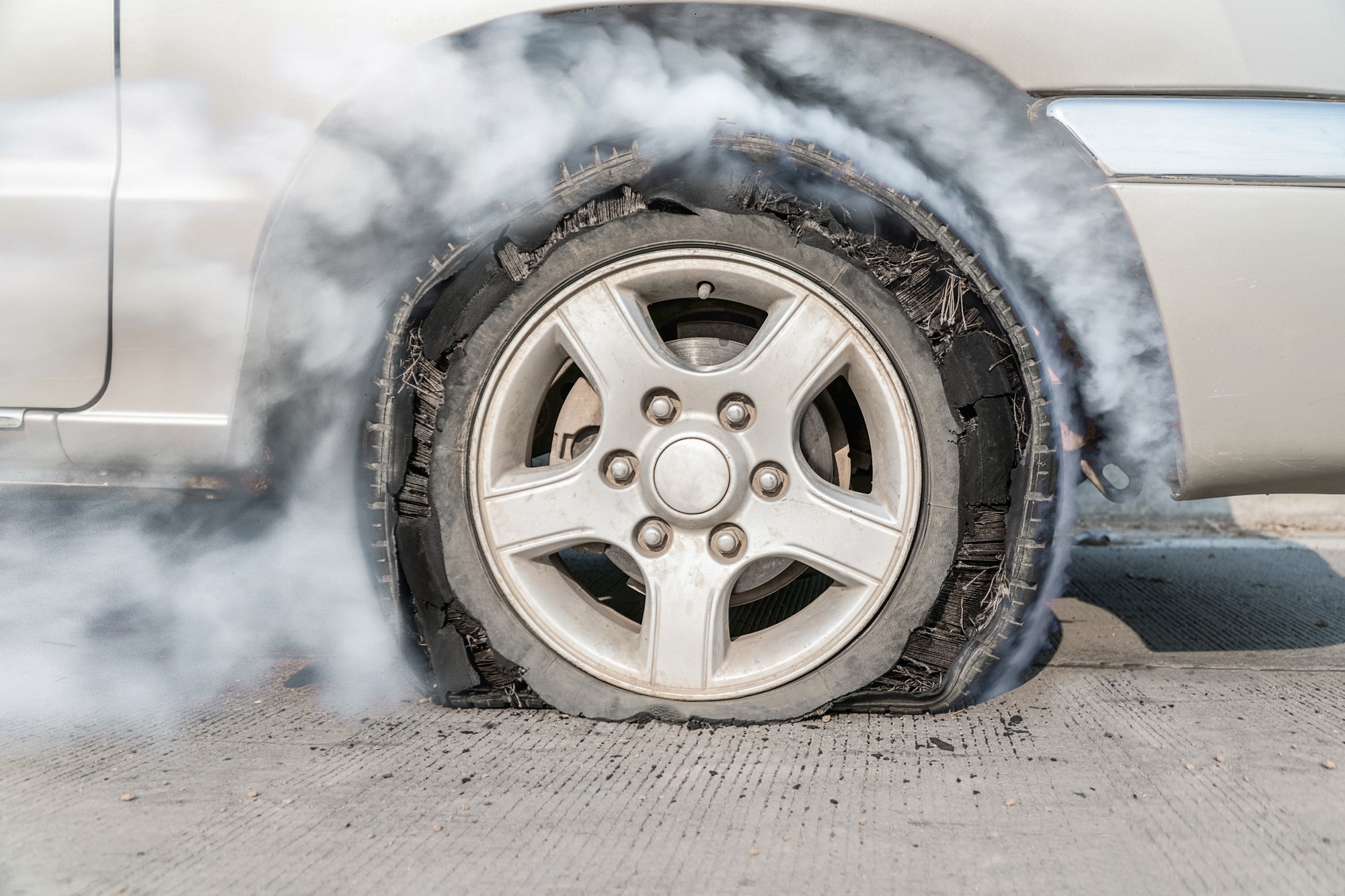What To Do When You Have a Tire Blowout
Stay calm, stay safe.
 Shutterstock
Shutterstock
A tire blowout can be a scary experience for even the most experienced driver. How you handle a blowout can go a long way toward keeping you and those around you safe and sound. With that in mind, we put together these tips on what to do should you have a blowout to help you get back on the road — and get you home — with as little stress as possible.
Stay Calm Behind the Wheel
A tire blowout can be loud and startling, or it can be completely silent and only make itself known when your vehicle starts to handle erratically (including an abrupt tug at the steering wheel or the sensation of the rear end pulling or moving from one side to another).
In both cases, staying calm, keeping the wheel pointed straight, and avoiding slamming on the brakes is essential. In fact, it's often a good idea to lightly apply the accelerator, as this will help preserve your automobile's stability.
Slowly Pull Off the Road
Staying off the brakes as much as possible, try to locate a place where you can safely pull off the road and coast to a stop. You'll want enough room to have your vehicle sitting entirely off the roadway yet still be visible, if possible, to other traffic and potentially any tow services you might call. Make sure your emergency flashers are on to make it even easier for others to spot you.
Is it Safe to Leave Your Car?
Once you've pulled over and are stopped, it's time to evaluate whether it's safe to leave your vehicle or not. A multi-lane interstate highway is a hazardous place not to be protected by the steel cage of your car or truck, and it can be risky to stand on the shoulder. If there is heavy, high-speed traffic, your best bet is to call a roadside assistance service to either tow your vehicle to a garage or have a trained professional install your spare tire.
If you feel there is enough space between your vehicle and the road surface, however, or if you are on a lower speed, less-traveled road, you might decide to change the tire yourself. Before getting started, verify that you have everything you need: a spare tire, jack, lug wrench, key for locking lug nuts, and other essentials. If you have flares or a reflective triangle you can deploy to alert other drivers to your presence, make sure to do so. Also make sure the surface you’re parked on is a stable surface before raising your car with the jack.
Remember: Not all spare tires are intended to be a long-term solution. Space-saver spares typically have a maximum safe speed and distance limits before you must replace them with a full-size tire.
Survey the Damage
Once you're back home or in a mechanic's service bay, it's time to discover if the blowout did any further damage to your vehicle. Perhaps the rim bent after contacting the road surface or flailing rubber from the tire pulled at brake lines or slapped against the bodywork. Have your vehicle evaluated by a professional to get the complete post-blowout picture.
Written by humans.
Edited by humans.
 Benjamin Hunting
Benjamin HuntingBenjamin Hunting is a writer and podcast host who contributes to a number of newspapers, automotive magazines, and online publications. More than a decade into his career, he enjoys keeping the shiny side up during track days and always has one too many classic vehicle projects partially disassembled in his garage at any given time. Remember, if it's not leaking, it's probably empty.
Related articles
View more related articles